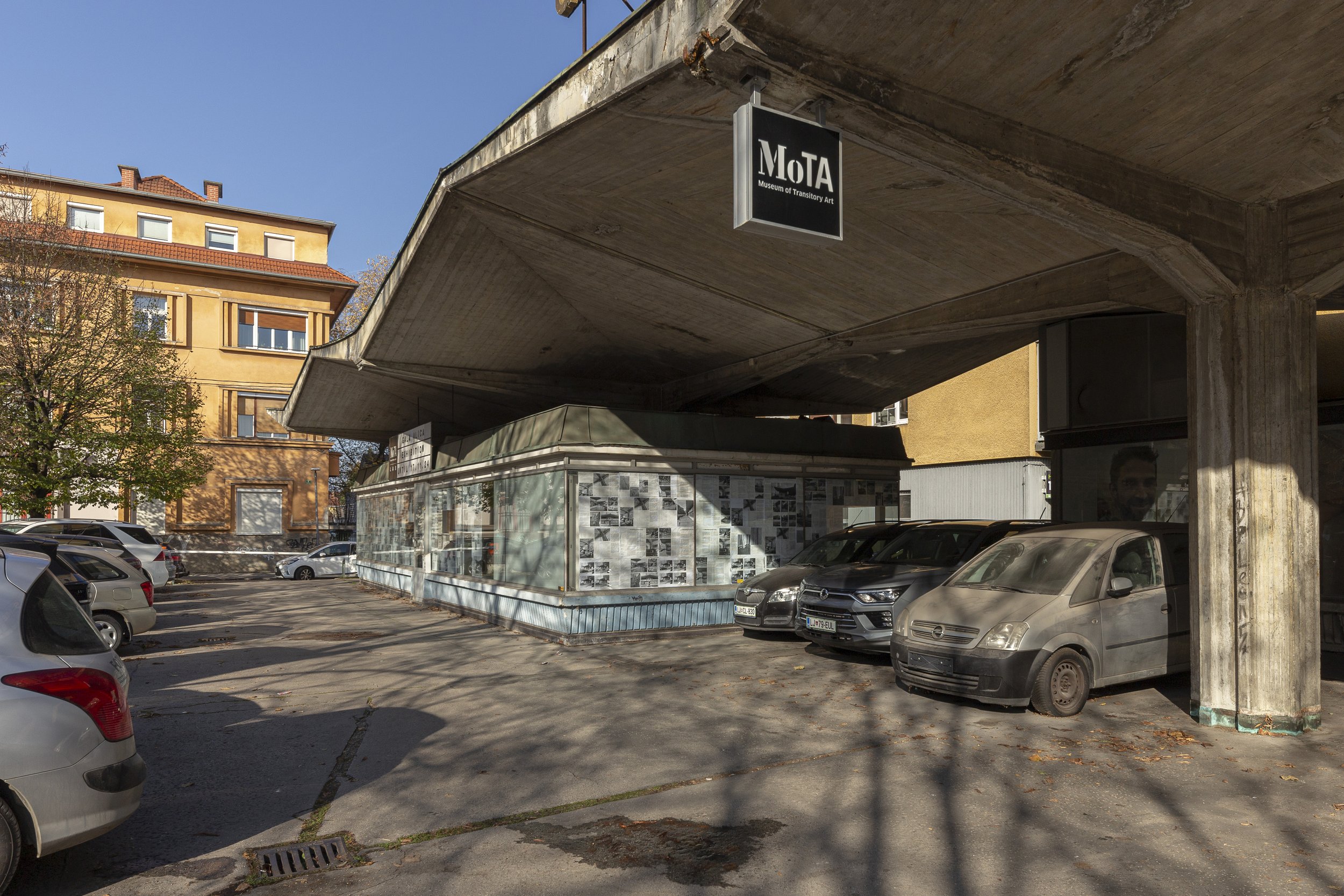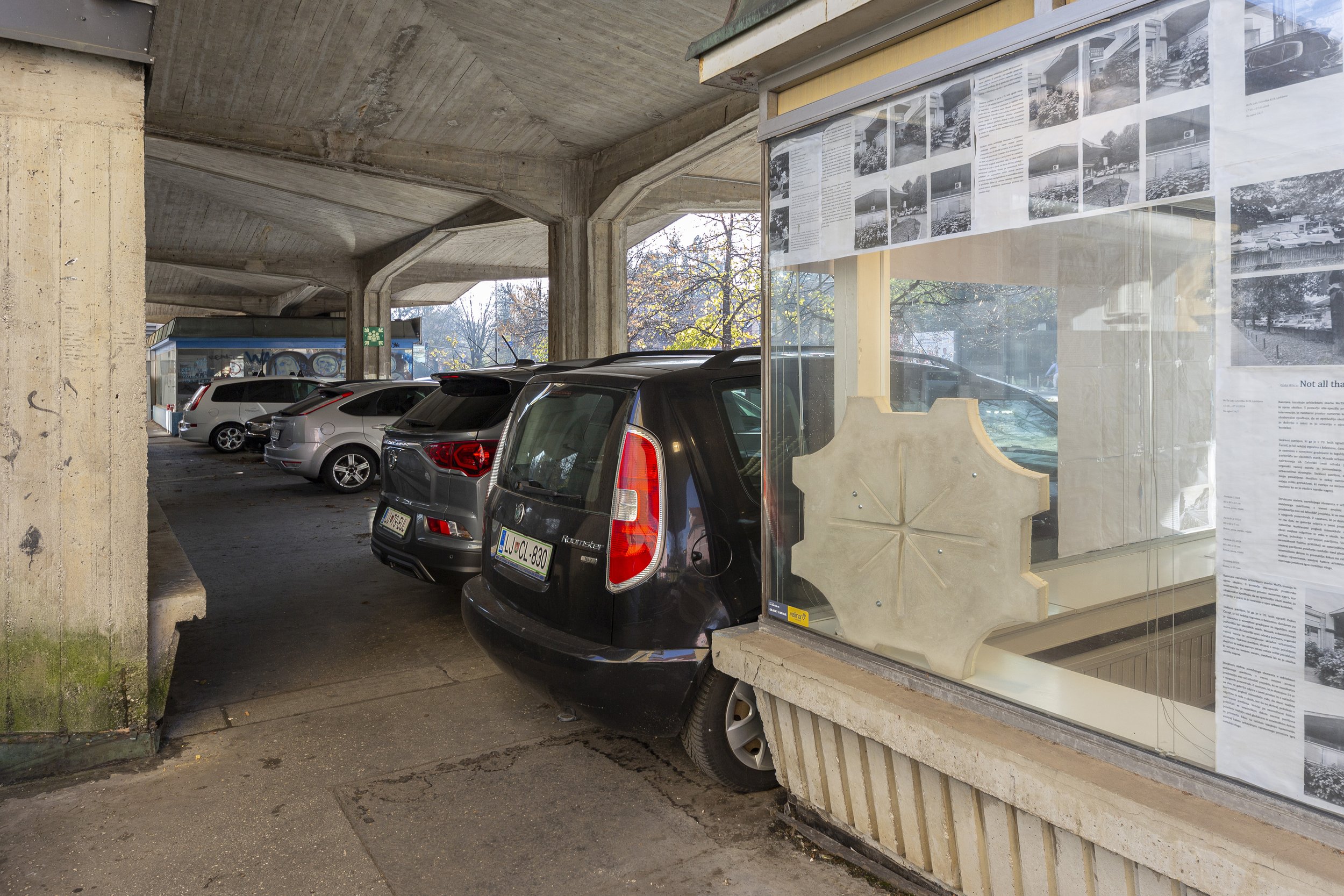
Not all that persists prevails
2024
Site-specific spatial intervention, consisting of three sculptures, video projection and intervention on the windows of the museum
dimensions variable
various materials
The exhibition Not all that persists prevails explores the architecture of the MoTA Museum building and its surrounding environment. Through a site-specific spatial intervention, the exhibition space is intentionally closed off, encouraging visitors to walk around the building and experience it in its entirety, situating it within its urban context.
Originally built in the 1970s by Dušan Černič, the glass pavilion was first a hardware shop but now finds itself overshadowed by newer constructions and lost amidst a parking lot and surrounding buildings. The patchwork of urban planning along Celovška Street reflects the slow, organic growth of the city and the lack of cohesive urban strategy. The glass pavilion, along with its forgotten twin just meters away, remains a relic of a bygone era, standing still while its environment has evolved.
The structure of the column, the central element in the architecture of the glass pavilion, with all its meanings, is one of the project's starting points, which manifests itself in its iterations. With the exhibition accessible 24 hours a day, the gallery opens into the public space, offering carefully curated views that invite passersby to sneak peeks through small openings and slots in the windows into the pavilion's interior. However, the inability to physically approach the artworks within the pavilion emphasizes the distance between the viewer and the artwork and shifts the focus to the overall viewing experience, within which the architecture of the exhibition space plays a central role.
two twin glass pavilions
covered by graffiti
covered by little secret messages
covered by newspaper pages
covered by rows of gray black and silver cars
covered by megalomaniac zigzag roof
covered by colourful fallen leaves
covered by the bustling noise of Celovška street
covered and lost, they reflect in their glass skin all that and more
reflecting me while I write
reflecting you while you read
We stand together doubtfully in the sea of new developments.
The Celovška street is overflowing with traffic, but not much spills over to the twin pavilions. A couple of passers-by, dog walkers on the way to Rožnik, shoppers with Lidl bags full of weekly groceries. How many cars does it take to hide a building from the wandering eye?
The modern world feels intrusive, yet the pavilions stand indifferent. They are relics of a bygone era, persisting in concrete, glass and steel. For decades, their pillars have quietly carried on with the full weight on their shoulders so that the rest can immerse itself in glassy emptiness. But structures, too, crack under pressure.
The pillars suddenly crumble into pieces and claim the forgotten pavilion. Like fossils of our time, the broken particles take on the form of their own. The once all-powerful are now fragile, in need of being held up by glass and protected by foam. Robbed of their role of holding and carrying, their arms nevertheless still reach towards the sky. They persist but do not prevail in the sea of new development









